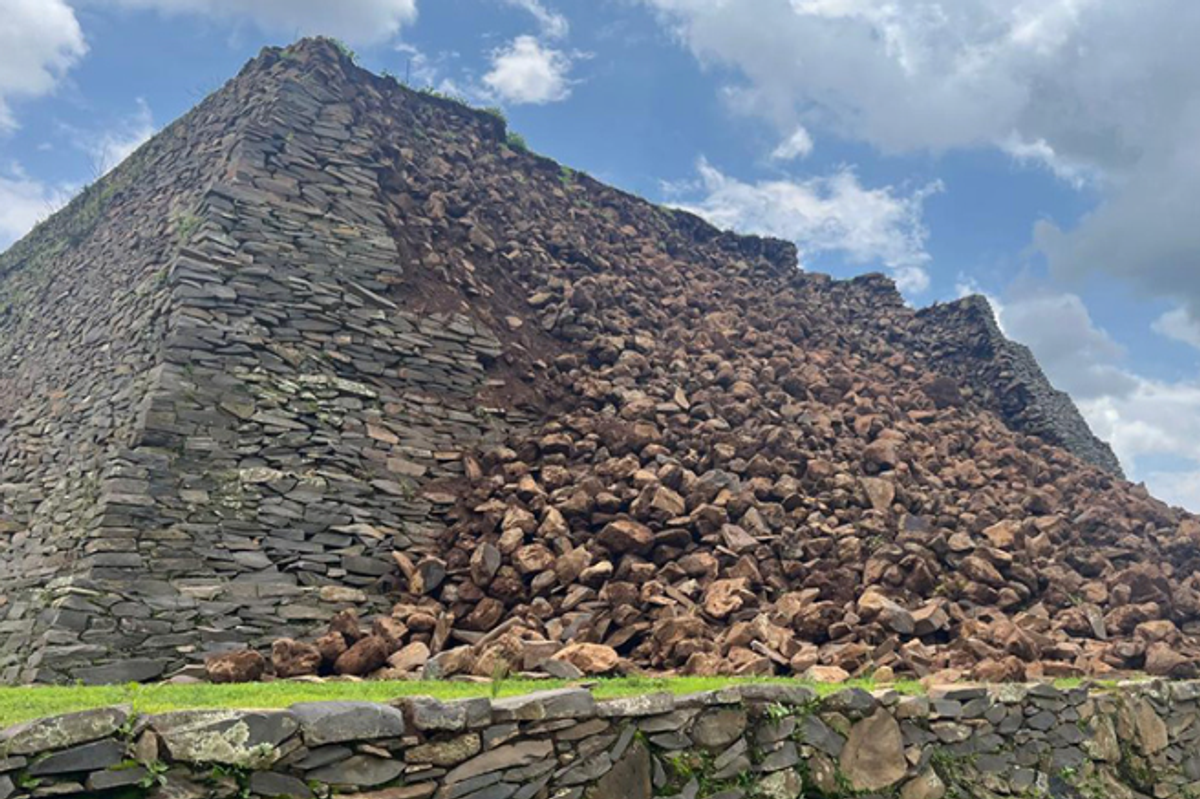Harriet Brewis
Nov 24, 2025
Why You Can't Explore The Pyramids (+ Other Ancient Mysteries)
content.jwplatform.com
Fears of an impending apocalypse are circulating following the sudden collapse of an ancient pyramid.
The stone monument, which has stood proud in the Mexican state of Michoacàn for some 1,100 years, caved in on the night of 29 July, leaving an ominous pile of rubble.
Having weathered the centuries, the 15-metre (around 50-foot)-high was unable to withstand the pressure of intense rain, which battered it over a number of hours.
The pyramid, which forms part of the prized archaeological site of Ihuatzio, was once one of the best-preserved monuments of the region’s pre-Hispanic history.
But now, experts fear for the future of such iconic structures, as the threat of extreme weather events looms heavy across the world.

Mexico has suffered a succession of natural disasters, with the country’s worst drought in 30 years swiftly followed by a barrage of thunderstorms and heavy rainfall."
The high temperatures, previously recorded in the area, and the consequent drought caused cracks that favoured the filtration of water into the interior of the pre-Hispanic building," Mexico's National Institute of Anthropology and History (INAH) said in a translated statement about the crumbling pyramid.
As a result, the monument’s collapse was all but inevitable, the INAH added, stressing that officials were now focused on repairing the structure "in recognition of the cultural heritage of Mexicans."

Meanwhile, the building’s sudden disintegration has been a major blow to the Purépecha people, who have inhabited the region for centuries.
Some have even warned that the structure’s demise could be a sign of darker things to come.
Local resident Tariakuiri Alvarez wrote in a Facebook post that his ancestors would have regarded the destruction as a “bad omen", indicating the "proximity of a significant event".
In his message, he explained that before the arrival of the Spanish conquistadors in Mexico, a similar cataclysm occurred because the gods were “displeased”.
In a further portentous twist, commentators have pointed out that just days after the pyramid’s collapse, another ancient monument caved in; this time, in the US.
Glenn Canyon's iconic Double Arch before (left) and after (right) its collapse(National Park Service)
Utah’s celebrated Double Arch (also known as “the Toilet Bowl” and the “Hole in the Roof”) collapsed in the Glen Canyon National Recreation Area on August 8.
As the name suggests, the Double Arch consisted of a close-set pair of natural arches made out of Navajo sandstone, which was believed to date back around 190 million years.
In a statement, the National Park Service announced that the popular tourist attraction had succumbed to changing water levels and erosion.
And whether or not the destruction of two beloved landmarks signifies that the end of the world is nigh, one thing is clear: environmental changes are having a dramatic effect on the world around us, and we must act quickly or brace for further dramatic losses.
This article was originally published on 20 August 2024
Ancient 4,500-year-old Egyptian pyramid could be home to a secret doorway
Is there really a hidden city under Giza's pyramids? Experts weigh in on theory
Sign up for our free Indy100 weekly newsletter
How to join the indy100's free WhatsApp channel
Have your say in our news democracy. Click the upvote icon at the top of the page to help raise this article through the indy100 rankings
Top 100
The Conversation (0)













